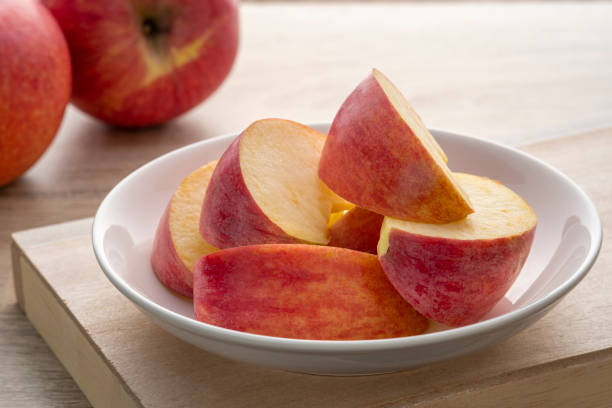When embarking on culinary adventures or meticulously planning our grocery lists, one question often arises: How many apples are in a pound? This seemingly simple query is more nuanced than it appears, intertwining the realms of culinary arts, nutrition, and practical shopping wisdom. Our exploration into this topic is not just about numbers; it’s a journey through variety, size, and the importance of understanding our food. Whether you’re a home chef, a health enthusiast, or someone navigating the grocery aisles, knowing the answer can significantly elevate your cooking and shopping experience.
This article, “How Many Apples In A Pound,” delves deep into the heart of the matter, offering insights that range from the types of apples to the impact of size and weight on your culinary endeavors. We don’t just stop at giving you a number; we equip you with the knowledge to make informed decisions, whether you’re baking a pie, packing a lunch, or simply seeking the best value for your money. Through expert analysis and practical advice, we aim to transform how you view and utilize apples in your daily life.
Join us as we unravel the mystery, providing not only the answer to how many apples are in a pound but also enriching your understanding of this beloved fruit. This article promises to be a valuable resource that piques your curiosity, encourages further exploration, and, most importantly, enhances your appreciation and application of apples in various aspects of life. Let’s embark on this flavorful journey together, one apple—and pound—at a time.
What Are Apples?

Apples are a type of fruit that grow on trees and are part of the rose family. They have a round shape with varying shades of red, green or yellow skin depending on the variety. Inside, apples have a white flesh that is juicy and sweet to taste. They also contain seeds in the center which can be found in a star-like pattern.
What Are The Types Of Apples?
Cripps Pink / Pink Lady, Empire, Fuji, Gala, Golden Delicious, Granny Smith, Honeycrisp, McIntosh, Red Delicious are some of the types of apples.
Unveiling the Mystery
When it comes to apple weights, several key factors are at play:
- Density and Water Content: Apples with denser flesh or lower water content tend to weigh more than crisp, juicy varieties.
- Variety: Different apple types vary wildly in size, from petite Lady apples to giant Mutsu.
- Ripeness: Unripe apples weigh less due to lower water weight. As they ripen, the water content increases and so does overall weight.
To showcase the range, here’s a quick comparison of some popular apple sizes:
- Honeycrisp: Average 7-8 ounces. About 2 medium apples per pound.
- Gala: Average 5-6 ounces. Around 3 small apples per pound.
- Granny Smith: Average 8 ounces. Approximately 2 large apples per pound.
As you can see, weight can fluctuate significantly between varieties. For a visual guide, this chart compares the relative size of common apple types so you can easily match up what you’re buying with how many will fit per pound.
Beyond Averages
While the averages above are useful guides, apple weights also depend on other factors:
- Growing Conditions: Apples from trees with optimal sunlight, water and nutrients tend to be larger and heavier.
- Storage/Handling: Bruising, injury and moisture loss can decrease apple weight over time after harvesting.
- So two apples of the same variety may not always align perfectly with the averages. What matters is having a helpful reference point for estimating weights.
Practical Applications
Armed with the knowledge above, let’s look at how it applies in everyday situations:
- Buying Loose Apples: When picking loose apples, choose a medium to large size of your preferred variety as a one pound reference. Then visually compare other apples to estimate if they equal a pound.
- Adjusting Recipes: Recipes may specify “medium apples” but weights vary. For accuracy, look up the average weight of the apple type called for and adjust quantity as needed.
Being comfortable with estimating apple weights by sight takes practice. But a bit of hands-on experience will quickly improve your skills.
Fun & Fascinating Apple Facts

Think you know everything about apples and weight? Here are a few fascinating bits to surprise your friends:
- The heaviest apple ever was grown in Japan, weighing over 4 pounds.
- Rather than pounds, apple weights are often measured in kilograms internationally, ranging from 100g to 300g.
- The world’s current heaviest apple variety is the Giant Atlantic, which can reach up to 1 kg or over 2 pounds.
- Small apples under 3 inches wide are known as crabapples. The tiny Siberian Crab only reaches 1-2 ounces.
- Apples float because they contain 25% air, allowing them to bob in water. More dense apples sink more easily.
- Apples ripen 6-10 times faster when stored with bananas, thanks to ethylene gas.
- It takes about 36 apples to create one gallon of apple cider. More for juicy varieties and less for dense types.
- Apple peel contains over half the fiber and many antioxidants, so don’t peel them.
- Ancient Greeks and Romans actually valued small, dense apples over larger and juicier varieties.
Conclusion
While apples may seem simple, their weights actually fluctuate in complex ways. But by understanding a few key factors like variety, ripeness and growing conditions, you can easily estimate the number of apples per pound and adjust recipes accordingly. So next time you’re at the market or baking up treats, put your new apple weight expertise to use. Spend time picking out gorgeous, fresh-from-the-orchard varieties and appreciate their uniqueness. Maybe even try your hand at growing your own. The world of apples offers so much to explore.
